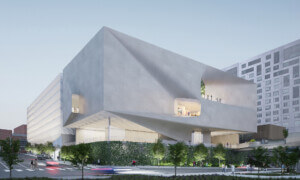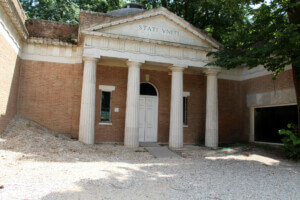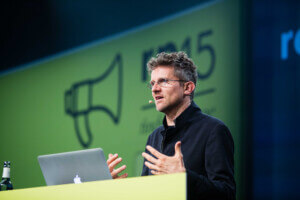Seven design teams have been selected to represent the United States in the U.S. Pavilion at the 2018 Venice Architecture Biennale. The pavilion’s curators, Niall Atkinson, from the University of Chicago; Ann Lui of the School of the Art Institute of Chicago, and Los Angeles–based critic and curator Mimi Zeiger, selected Dimensions of Citizenship as the theme of this year’s exhibition, to engage architecture in the timely question of what it means to be a citizen.
According to the curators, the selected teams represent a range of design practices, from the technical to the speculative, but “are united by researched-based methodologies and the drive to use that research to push boundaries—formal, disciplinary, and political.” Each team will examine a different dimension of design and citizenship. Their projects will be placed in dialogue with existing projects by architects and other practitioners, who will be announced later.
The selected exhibitors are:
Amanda Williams + Andres L. Hernandez (Chicago, IL)
This duo brings an artistic and political bent to the Pavilion: both Williams and Hernandez have training in architecture and explore themes related to race, vacancy, and blight in urban landscapes.
Williams is most widely known for her work Color(ed) Theory, shown in the 2015 Chicago Architecture Biennale; Hernandez is co-founder of the Revival Arts Collective as well as the founder and director of the Urban Vacancy Research Initiative.
DESIGN EARTH (Cambridge, MA)
Headed by MIT’s Rania Ghosn and El Hadi Jazairy, this design research practice works on the geographies of technological systems from speculation into the problems posed by waste management to the fate of oil-rich landscapes.
They’re currently at work on an exhibition titled Geostories, a “manifesto […] on the environmental imagination presented in architectural projects that engage the planetary scale with a commitment to the drawing as a medium.”
Diller Scofidio + Renfro (Cambridge, MA)
This heavy-hitting firm will already be familiar to many. Best known for their work on the High Line in New York City, The Broad in Los Angeles, and the Institute of Contemporary Art in Chicago, DS+R brings a seasoned, interdisciplinary team to the task.
Estudio Teddy Cruz + Fonna Forman (San Diego, CA)
This research-based political and architectural practice is comprised of two professors from the University of California, San Diego (USCD): Teddy Cruz and Fonna Forman.
Over the years, the two have examined issues of informal urbanization, civic infrastructure, and public culture, mostly focused on Latin American cities. They also co-head USCD’s Cross-Border initiative, whose mission is “to promote interdisciplinary poverty research and practice in the San Diego-Tijuana border region.”
Keller Easterling (New Haven, CT)
Easterling is a professor at Yale University’s School of Architecture and a prolific author of eight books and countless articles.
Her most recent publication through Verso, Extrastatecraft: The Power of Infrastructure Spaces, looks at global infrastructure with the angle that “emerging governmental and corporate forces [are] buried within the concrete and fiber-optics of our modern habitat.”
SCAPE (New York, NY)
Founded and directed by Columbia GSAPP professor Kate Orff, SCAPE is a landscape architecture firm with an eye on large-scale ecological resilience. In its winning entry to the 2014 Rebuild by Design competition, Living Breakwaters, SCAPE employed multiple lines of storm surge defense including artificial reefs promoting biodiversity in New York City’s heavily polluted harbor.
Orff has also published an examination of the chemical corridor between New Orleans and Baton Rouge, Louisiana, in partnership with photographer Richard Misrach – Petrochemical America – and more recently, Toward an Urban Ecology.
Studio Gang (Chicago, IL)
Architect and MacArthur fellow Jeanne Gang is also well-known for her designs, from her undulating Aqua Tower to her Women’s March-inspired exhibit Hive at the National Building Museum.
Studio Gang’s international work centers on a design principle of “actionable idealism” – the capacity for design to push public awareness of different issues (whether climate change, inequity, or urban decay) and encourage change – which will lend itself well to this year’s theme.
• • •
Additionally, Iker Gil – a professor at the School of the Art Institute of Chicago (SAIC), Director of MAS Studio, and founder of its design journal MAS Context – has been selected as associate curator of the exhibition to join the curatorial team of Atkinson, Lui and Zeiger.










